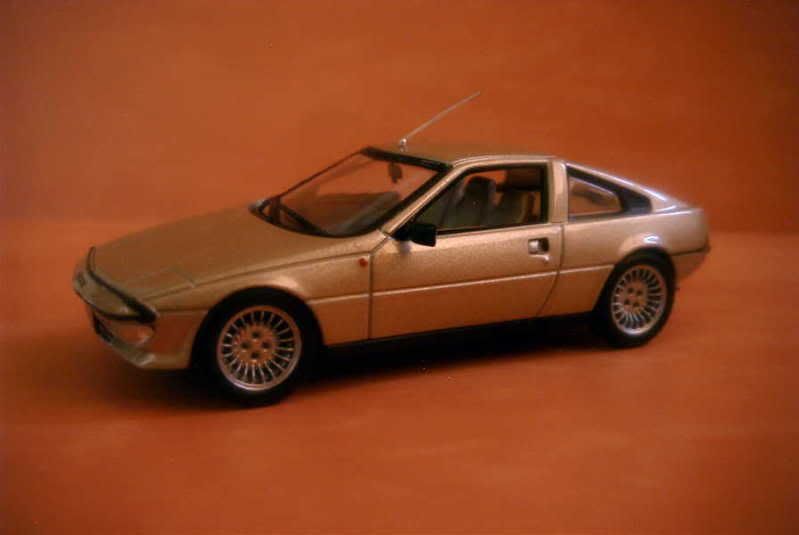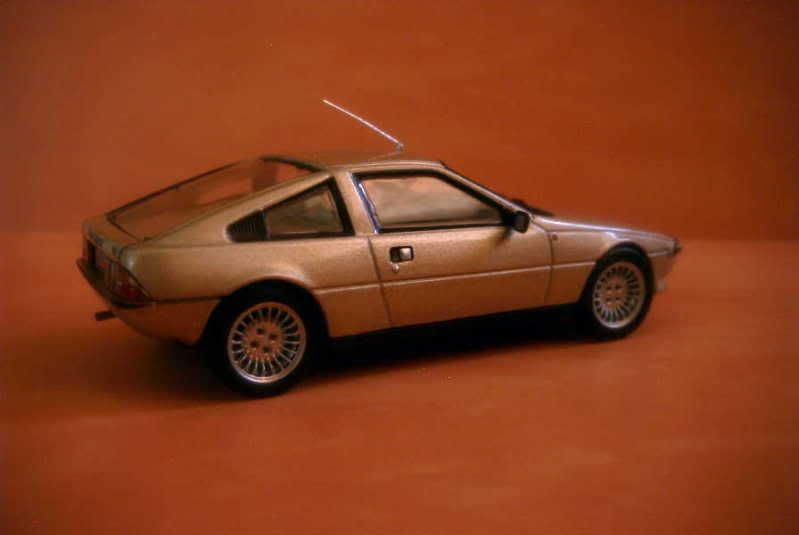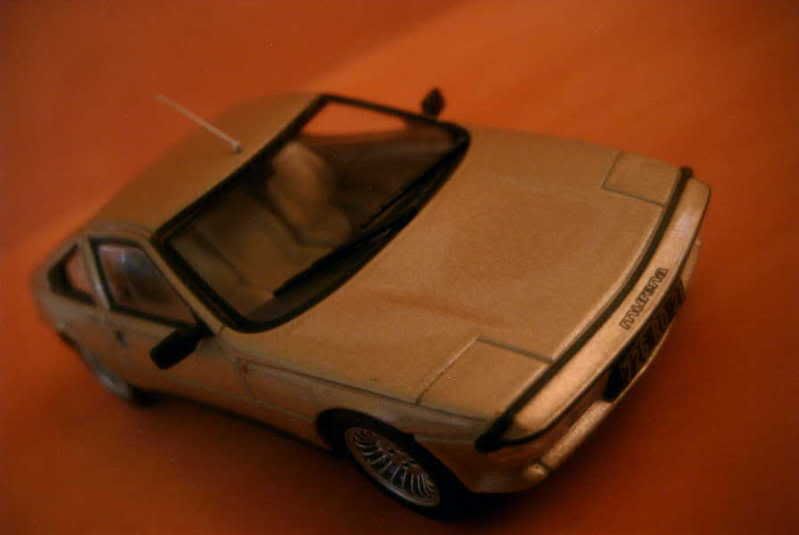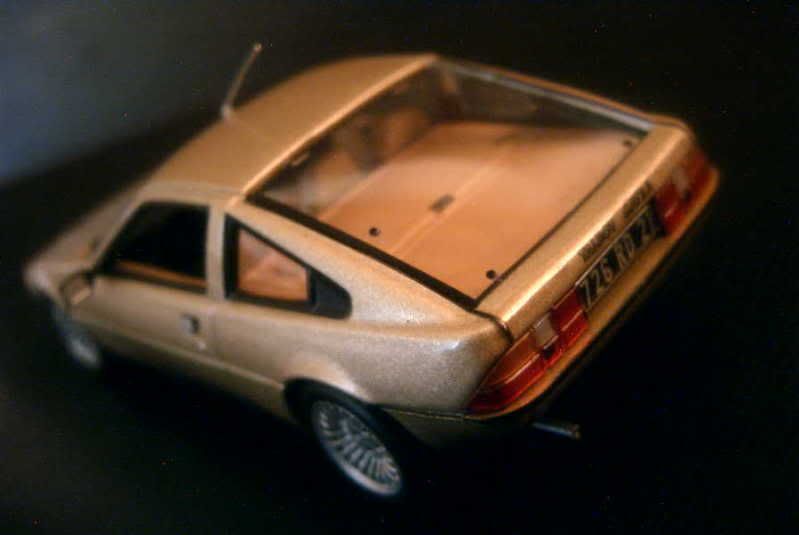A little history
In 1980, some representatives from Matra presented to Peugeot, which had just taken control of Simca, the project they had developed as a replacement for their Rancho. This “P-18” was a much larger vehicle able to carry a whole family and its luggage. Peugeot, left penniless by the huge operation it had just carried out by taking over all of Chrysler’s European operations, refused to finance the project, though Matra was reassured that it would handle the production of the Bagheera’s successor, the Murena.
The Murena project had actually started in 1976. The new car was to correct all the mistakes of the Bagheera. The overall layout was to remain the same: that of a mid-engine, sporty-looking automobile fitted with three side-by-side seats. Equipped with a rather plain 1.3-litre Simca, the Bagheera didn’t deliver the performances its outstanding look promised. This time, the base engine would be a 1.6-litre block, with a 2.2-litre optional, the latter with several performance packs available. The PRV V6 was considered for a time, but unfortunately this didn’t materialize. Aerodynamics were perfected at length, extensive wind-tunnel testing allowing the Murena to be, with a Cx below 0.33, the sleekest of all the world’s mid-engine sportscars from its launch until the Eighties’ twilight. Another common complaint about the Bagheera turned on its tendency to rust. A new method of warm-galvanizing the entire chassis was put in place – the Murena was the first mass-produced car in the world to be applied such a treatment, and Matra was so certain that the problem had been solved that it offered a six-year warranty against corrosion to all buyers of a new Murena.
The new coupe was introduced in haste at the Paris motor show in October 1980, but sales were delayed until spring 1981, while some technical problems were being solved. Though the car’s design was stunning, its higher weight versus that of its predecessor reduced to nought the effects of the power increase. Handling and comfort were praised, but performances were still too limited for a coupe with such a high price tag – the Bagheera, at least, had been a relative inexpensive car…
Peugeot, which was then pruning its less profitable branches, denounced its agreement with Matra in July 1983. For a few months, the small manufacturer carried on alone. By December, the final Murena was built, the last of a series of only slightly more than ten thousands. Was Matra in trouble? On the contrary – its plant needed to recover its full capacity in order to start a new endeavour. The company’s future had just been secured, thanks to a contract signed with Renault, which terms awarded to the junior partner the construction of its resurrected P-18 project, sporting the famous diamond-shaped badge. Matra was building the car, but Renault needed to find the name: it chose Espace.
About the model
Model: Talbot-Matra Murena
Year: 1981
Maker: Ixo
Scale: 1/43
Distributed by: Altaya as no.13 of its Les Belles Années Simca press series
Acquired: second hand with stand and box, in October 2007, through mail from a fellow collector from Rouziers de Touraine, France
Despite a small price hike, newer Altaya models are certainly better bargains than the older ones. The simplified details of the models previously sold by the Spanish distributor have been replaced by die-casts which quality has never been closer to genuine Ixo than it is at present. Models from the Simca series are among those, and this Murena is certainly remarkable all around. The paint chosen was the most commonly seen on this car, adding to its realism. My only reserve could be brought by the rearview mirrors, which glass is still painted in silver, rather than reproduced by a reflective part glued in place. I'd give 13/20 to this model.




In 1980, some representatives from Matra presented to Peugeot, which had just taken control of Simca, the project they had developed as a replacement for their Rancho. This “P-18” was a much larger vehicle able to carry a whole family and its luggage. Peugeot, left penniless by the huge operation it had just carried out by taking over all of Chrysler’s European operations, refused to finance the project, though Matra was reassured that it would handle the production of the Bagheera’s successor, the Murena.
The Murena project had actually started in 1976. The new car was to correct all the mistakes of the Bagheera. The overall layout was to remain the same: that of a mid-engine, sporty-looking automobile fitted with three side-by-side seats. Equipped with a rather plain 1.3-litre Simca, the Bagheera didn’t deliver the performances its outstanding look promised. This time, the base engine would be a 1.6-litre block, with a 2.2-litre optional, the latter with several performance packs available. The PRV V6 was considered for a time, but unfortunately this didn’t materialize. Aerodynamics were perfected at length, extensive wind-tunnel testing allowing the Murena to be, with a Cx below 0.33, the sleekest of all the world’s mid-engine sportscars from its launch until the Eighties’ twilight. Another common complaint about the Bagheera turned on its tendency to rust. A new method of warm-galvanizing the entire chassis was put in place – the Murena was the first mass-produced car in the world to be applied such a treatment, and Matra was so certain that the problem had been solved that it offered a six-year warranty against corrosion to all buyers of a new Murena.
The new coupe was introduced in haste at the Paris motor show in October 1980, but sales were delayed until spring 1981, while some technical problems were being solved. Though the car’s design was stunning, its higher weight versus that of its predecessor reduced to nought the effects of the power increase. Handling and comfort were praised, but performances were still too limited for a coupe with such a high price tag – the Bagheera, at least, had been a relative inexpensive car…
Peugeot, which was then pruning its less profitable branches, denounced its agreement with Matra in July 1983. For a few months, the small manufacturer carried on alone. By December, the final Murena was built, the last of a series of only slightly more than ten thousands. Was Matra in trouble? On the contrary – its plant needed to recover its full capacity in order to start a new endeavour. The company’s future had just been secured, thanks to a contract signed with Renault, which terms awarded to the junior partner the construction of its resurrected P-18 project, sporting the famous diamond-shaped badge. Matra was building the car, but Renault needed to find the name: it chose Espace.
About the model
Model: Talbot-Matra Murena
Year: 1981
Maker: Ixo
Scale: 1/43
Distributed by: Altaya as no.13 of its Les Belles Années Simca press series
Acquired: second hand with stand and box, in October 2007, through mail from a fellow collector from Rouziers de Touraine, France
Despite a small price hike, newer Altaya models are certainly better bargains than the older ones. The simplified details of the models previously sold by the Spanish distributor have been replaced by die-casts which quality has never been closer to genuine Ixo than it is at present. Models from the Simca series are among those, and this Murena is certainly remarkable all around. The paint chosen was the most commonly seen on this car, adding to its realism. My only reserve could be brought by the rearview mirrors, which glass is still painted in silver, rather than reproduced by a reflective part glued in place. I'd give 13/20 to this model.







No comments:
Post a Comment